One of the most visited countries in Western Europe, the ‘land of freedom’ Netherlands , is one of the most diverse countries in Europe with its regular appearance, calmness and peace, lush geography and colorful nightlife and culture and art activities, where all colors of life are lived without limits.
Known all over the world for its tulips, windmills, canals, delicious cheeses and the bicycle capital of Amsterdam, the Netherlands offers travelers a wealth of options from art to architecture, from nightlife to Europe’s most valuable museums and to different and colorful festivals held every year. Hosting millions of tourists every year, the Netherlands is a country full of entertainment and discovery.
The Dutch say: God made the world, the Dutch created the Netherlands. The Netherlands, one of Europe’s most visited countries, is a real attraction with its natural beauties, impressive museums and beautiful cities where different cultures live together in an atmosphere of tolerance.
Known for its cheeses, windmills, bicycles, tulips and social rights, the Netherlands is a country that has succeeded in bringing its cultural values together with the modern world. Tourism in the Netherlands is one of the most important sources of income. Millions of tourists flock to the country every year to see works of Dutch art, architecture and colorful tulips.
Netherlands Travel Guide
The Netherlands, one of the four countries that make up the Kingdom of the Netherlands, is bordered by the North Sea to the north and west, Belgium to the south, and Germany to the east. The country, which consists of two provinces, North Holland and South Holland, is included in the UNESCO World Heritage List with 9 different values.
Amsterdam, the capital of the Netherlands, ruled by a constitutional monarchy. Rotterdam, Haag, Eindhoven and Utrecht are among the other big cities of the Netherlands. Being a member of the European Union, NATO and OECD, the Netherlands hosts the International Court of Justice, the International Criminal Court and Europol. The Netherlands draws attention with its educated population with a high standard of living. A high percentage of foreigners living in the country also contribute to this atmosphere.
Since more than half of the Dutch land is below sea level, the country is named Neder-Landen, meaning ‘low countries’. The Netherlands, whose official language is Dutch, has a surface area of 41,526 square kilometers. This ratio in the country with a population of 17 million as of 2016 makes the Netherlands one of the most densely populated countries per square meter in the world.
In the 15th century, the Duchy of Burgundy dominated the region in the Low Countries, the region on which present-day Belgium, the Netherlands and Luxembourg are located. In 1555, succeeding Emperor Charles II, his son King Philip II of Spain became the new ruler of the region.
In the period when these events took place, the Dutch established their own economy and ensured their internal unity. From 1568, they started the war of independence that lasted for 80 years. As of 1568, 7 regions that rebelled, especially Holland and Zeeland, united to form the union of Utrecht and declared their independence in 1570. With the Treaty of Westphalia in 1648, the eighty-year war ended and they gained their independence.
Having strengthened economically with the new discoveries in the 17th century, the Netherlands became the world’s leading trade center and maritime power. The French domination of this region resulted in the defeat of Napoleon in 1814. King William I was appointed head of state. In 1814, the lands were united under the United Kingdom of the Netherlands with the treaty between the Netherlands and Belgium, but this treaty ended when the Kingdom of Belgium was established in 1830.
The Netherlands, which remained neutral in World War I, was occupied by Nazi armies in 1940 to prevent a possible French and British invasion. II. Before the World War II, the Netherlands gave up its neutrality policy and signed the Brussels Treaty with Belgium and Luxembourg, France and England, and became a member of NATO and the EU.
Turks brought the tulip, whose homeland is Central Asia, to the Netherlands for the first time in 1560. Keukenhof Gardens (Netherlands’ Flower Gardens) is an area that offers visitors a visual feast with 7 million tulip bulbs. Tulips are an important source of income for the country, as 80% of the tulip bulbs grown each year are exported.
Between the 16th and 17th centuries, Dutch scientists invented the microscope, telescope, pendilium clock and mercury thermometer. Light drugs (marijuana, hashish) and hallucinogenic mushrooms are fully legal in the Netherlands under the name of ‘personal use’ by the state.
Vincent van Gogh, Rembrandt, Jan Vermeer, Jan Steen and Piet Mondriaan are the great Dutch painters who shape the world’s art. The Van Gogh and Kröller-Müller Museums display the most beautiful works of the grand master Van Gogh. With an average height of 184 cm for men and 170 cm for women, the Dutch are known as the tallest people in the world.
The orange carrot consumed today was known as purple until the 16th century, while the patriotic Dutch produced the first orange carrot. Because the color orange is known as the official color of the Netherlands and the royal family. Today, it is possible to see sweet, large, various colored carrots in the country.
The Wilhelmus Anthem, the national anthem of the Kingdom of the Netherlands, is also considered the oldest anthem in the world. Both the lyrics and the music coincide with the sixteenth century.
It is said that the Dutch people are constantly looking for an excuse to celebrate. So when planning a trip to Amsterdam, make sure it coincides with one of the numerous festivals that grace the city’s social calendar. Queen’s Day, celebrated on April 30 every year, is one of the biggest days. The celebrations, in which the whole of Amsterdam is closed with colorful celebrations, continue for 24 hours.
You can also visit the city in June, when it celebrates the Holland Festival, a four-week cultural festival. Another colorful festival is the Gay Pride Parade in August.
Festivals, on the other hand, cover everything from the most spectacular theater plays to exhibitions and concerts of the smallest music or tattoo artists. The festivities peak on King Willem Alexander’s birthday, King’s Day, and the whole country turns orange. However, the real spirit of the city is hidden in the ‘gezelligheid’ evenings, where both entertainment and comfort are experienced.
Netherlands Places to Visit
Although Amsterdam comes to mind for all travel lovers when it comes to places to visit in the Netherlands, in fact, the country has unique natural beauties to visit, cities with architectural wonders and many secret addresses to discover where everyone can find something for themselves.
From a small town with a romantic and bohemian lifestyle and a colorful life beyond traditional understanding, surrounded by water channels resembling a labyrinth and surrounding the city for kilometers, Amsterdam is of course the apple of the eye of the country.
Amsterdam, the homeland of music, opera and exhibitions, where art and daily life complement each other, is as precious as a gift for those seeking art and entertainment. The Royal Palace, Bloemenmarkt, Van Gogh Museum, Old Church and Anne Frank’s House and Dam Square are popular places for visitors.
The city of Rotterdam, which hosts one of the largest ports in Europe, has a very important place in the port trade and shipping economy of the country with its more than 300 shipyards. There are many other cities to visit in the Netherlands, where you can watch its different architecture by cycling between the canals, taste the best and different types of cheese in the world, and have wild fun in nightlife.
Access to Giethoorn Village in the province of Overijssel is provided only by sea. This fairy-tale town is also named after the Venice of the Netherlands.
1. Amsterdam
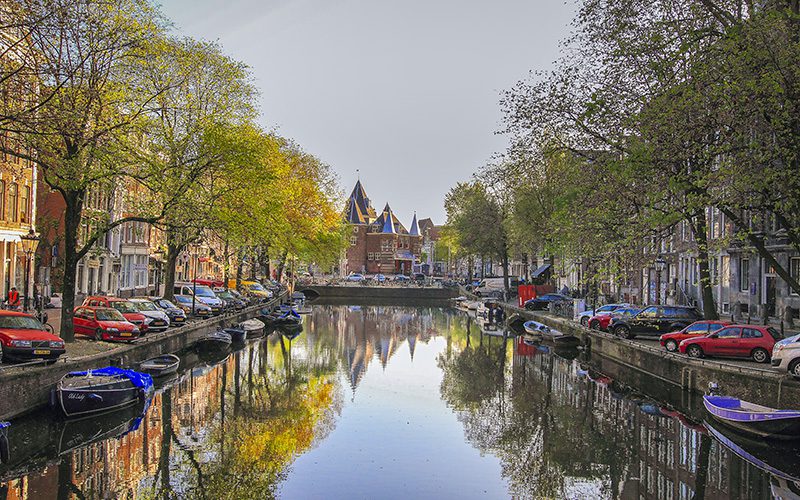
Amsterdam is one of the most popular cities in Europe today. The city, which was founded as a fishing village on the Amstel River in the 12th century, is the continent’s most visited city with its structures dating back to the 17th century, water channels, bridges, crazy nightlife, Coffee Shops and the Red Light District, which is at least as famous as Amsterdam.
Although Amsterdam, the lively capital of the Netherlands, is small compared to other European cities, it is a city where every visitor will be delighted with its museums, magnificent historical buildings and canals surrounding these buildings. There are activities that can appeal to all kinds of tastes in the city, where masterpieces from the classical period in its museums or very different sex and drug-themed subjects are exhibited.
Famous as the Venice of the North, with more than 100 km of water canals and 1,200 bridges connecting the city to 90 islands, Amsterdam’s canals are great places to visit, especially during the hot summer months.
Established on both sides of the canals, Amsterdam is also a city where there are more bicycles than vehicles and all kinds of traffic rules are regulated for cyclists. In the city, where you can come across a museum every step of the way, there is also a museum island that houses the most valuable museums of the country.
Dam Square is Amsterdam’s central square, where the Royal Palace is located . The Royal Palace of Amsterdam is one of the largest and most magnificent palaces in Europe. It has impressive architecture and rich interior decoration. Built as the town hall between 1648 and 1662, the palace has been crowned by all Dutch mornars since 1814.
The Old Church , the most beautiful church in Amsterdam , is the oldest structure in the city with its history dating back to 1306. Kalverstraat (Calves Street) , one of the oldest shopping streets of the city, stretching from Dam Square, where the New Church , built in 1417, is located, to the old Mint Tower, is one of the most important touristic spots of the city.
Another historic building is Weeper’s Tower , the last remnant of the city wall built in 1482 . The Jewish Quarter, one of the historical parts of the city , is where Spinoza was born and Rembrandt lived; in another part of Anne Frank’s II. Anne Frank’s House , where she hid with her family during World War II and has now been converted into a museum, is worth seeing.
Vondelpark is Amsterdam’s largest park. Home to lush green grass, a lake and many trees, this park is the ideal place for activities such as doing sports, spending time with nature, resting and having a picnic.
Also, be sure to see the beautiful towns of Amsterdam, which are famous for their windmills. Especially Volendam, Marken, Edam, Broek in Waterland, Monnickendam are all small but wonderful towns. They all look alike. Unlike these, do not leave the country without seeing Zaanse Schans, a paradise hidden in an epic beauty.
Zaanse Schans is literally an open-air museum with structures inspired by the original of the town of Zaanland, which dates back to the 1700s. It offers a complete feast of images with windmills and houses.
In Zaanse Schans, which is under protection by the state, you can visit the famous Dutch wooden shoe workshop, cheese museum, patisserie museum or have a picnic in front of houses like cakes by the canal.
Marken is one of the most famous fishing towns to be seen around Amsterdam. It is located 30 km from the city center of Amsterdam. Another delightful town , Volendam , is located on the shore of Lake Ijsselmeer. The towns of Edam and Monnickendam are also among the most beautiful villages to visit near Amsterdam.
2. Rotterdam
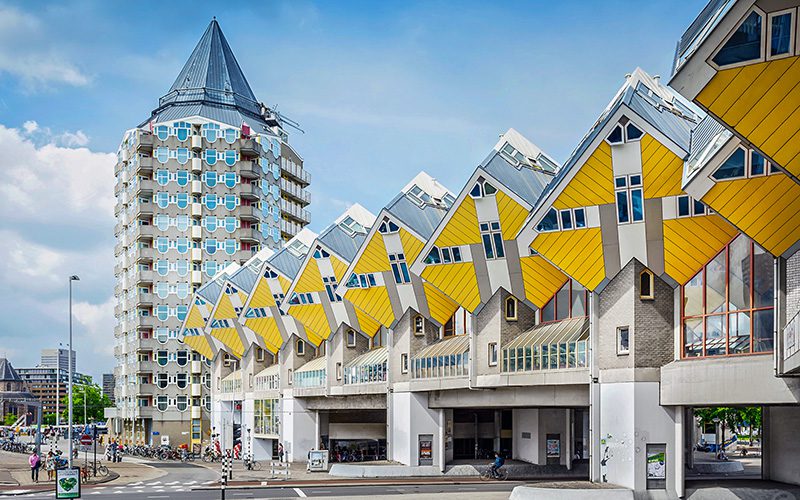
Rotterdam is the architectural capital of the country, founded in 1270 on the Rotte River in South Holland. It is now the commercial center of the country. On the other hand, Rotterdam, which is one of the cities that attract the most tourists in the Netherlands, is famous for having Erasmus University and the largest port in Europe. There is a direct flight from Istanbul to the city, which has a temperate oceanic climate, and it is also possible to reach the city by train from Amsterdam.
Rotterdam Central Railway Station with its architecture, Erasmus Bridge on the Nieuwe Maas River and the Boijmans Van Beuningen museum in the Museum Park are definitely places to see. Rotterdam, the country’s second largest city, also hosts numerous festivals and events throughout the year.
3. The Hague
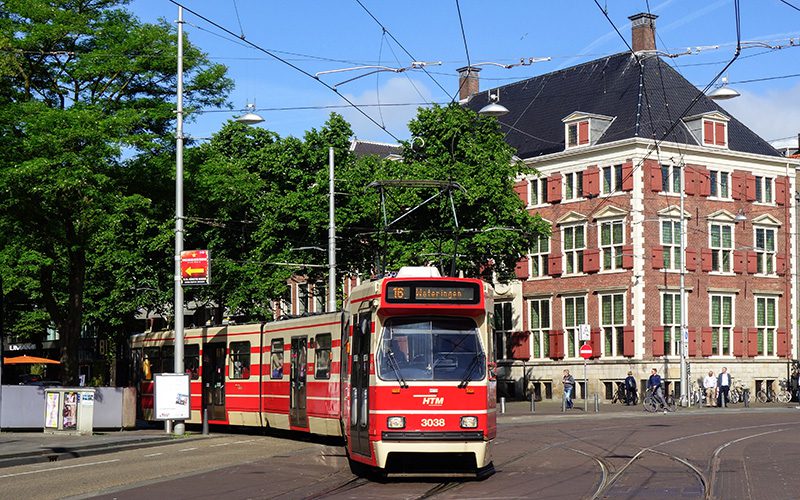
The Hague , also known as Den Haag , is one of the centers in the South Holland Region with an important geopolitical position. The Hague, which is also seen as the bureaucratic center of the country, is a small and modern city, as it hosts official authorities such as the government, parliament, ministries, supreme court and state council.
At the same time, the city, where important universal institutions such as the United Nations offices, the International Court of Justice and the International Criminal Court are located, welcomes more than 20 million visitors every year. One third of The Hague, which is one of the most beautiful cities in the Netherlands and comes after Amsterdam and Rotterdam in terms of population, consists of green areas.
It is possible to reach the city, where there is no direct transportation from Istanbul, by trains departing from Amsterdam every 15 minutes. Madurodam, Binnenhof, Escher Museum, Peace Palace, Louwman Museum, Ridderzaal, Noordeinde Palace, Mesdag Palace, Meermanno Museum and Bredius Museum should be visited in The Hague, which is one of the cities worth seeing in the country with its Baroque-style buildings, churches and museums.
4. Eindhoven
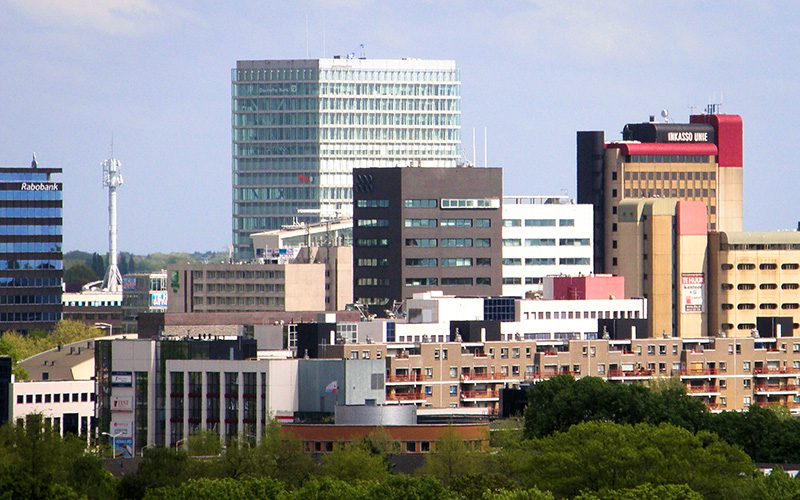
Eindhoven is located in the south of the Netherlands, very close to Belgium and Germany. Eindhoven, one of the largest cities in the Netherlands, impresses with its impressive architecture, important museums and natural habitats. In the city where approximately 10 thousand Turks live, it is possible to see new mosques as well as old churches.
The city center reflects the modern face of the region with its colorful and illuminated appearance. Known as the university city, Eindhoven is one of the greenest cities in the Netherlands. Eindhoven, which stands out with its music festivals and has countless museums, city parks and places to visit, is one of the must-visit cities of the Netherlands.
5. Utrecht
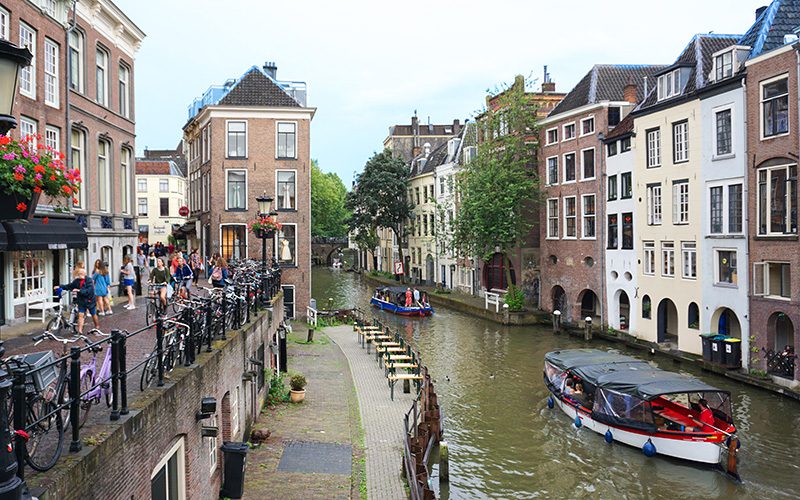
As Utrecht is located almost in the middle of the country, it has train connections with every part of the country. Utrecht, which is also one of the important religious centers of the country, is home to many historical buildings as well as eye-catching churches.
Especially around the Oudegracht Canal, the finely crafted houses and narrow streets offer magnificent views. The city, which has a very lively social and cultural life, is known as the place where the most social and cultural activities take place after the capital Amsterdam. Utrecht is home to a young and dynamic population with the influence of the university it hosts.
6. Leiden
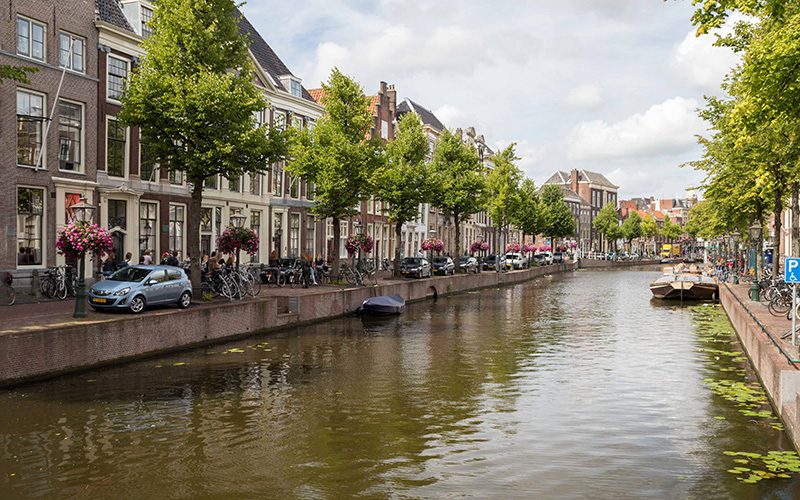
Leiden is a small settlement on the banks of the Rhine in the Dutch District of the Dutch Province of South Holland. In terms of urban settlement, structure, architecture and canal characteristics, it looks like a small model of the capital city of Amsterdam. The birthplace of the famous Dutch painter Rembrandt, Leiden is home to Leiden University, one of the oldest educational institutions in Europe and the first university in the Netherlands.
Showcasing the appearance of a typical student city, Leiden also houses the oldest botanical park in the Netherlands. Historical and cultural tourism is highly developed in the city, which is a paradise of museums and monuments. The Rhine, canals and parks are among the places that attract the most attention from foreign visitors. Hooklandse Church, Leiden University, West Gate and Old Observatory are the most prominent examples of the rich architectural texture of the city.
7. Groningen
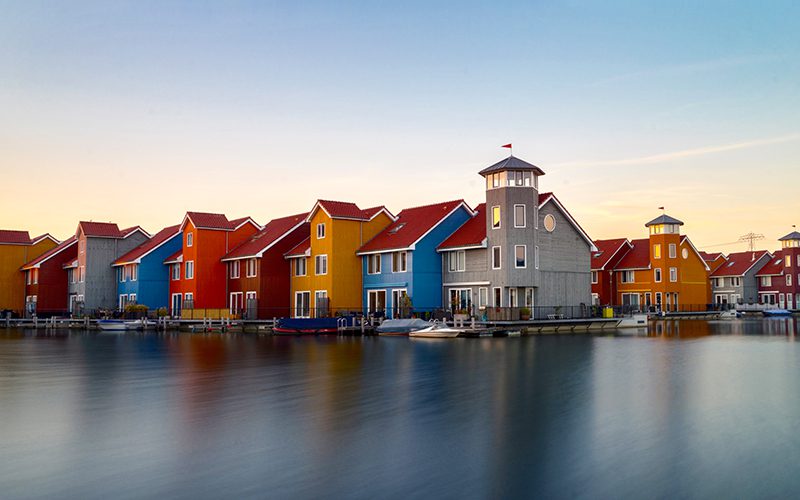
Groningen is a city located in the north of the Netherlands, where road and rail connections are highly developed and industry is also very effective. A Dutch city that has a say in many sectors. There are many natural wonders in Groningen, where green areas and forests cover a large area.
Groningen Train Station, Synagogue, Martini Church, Groningen Museum and Prinsenhof Gardens are among the remarkable places with their different atmosphere and natural habitat. Groningen, where a perfect nature, colorful houses, canals and rivers meet historical and modern structures, is one of the must-see cities of the Netherlands.
8. Delft
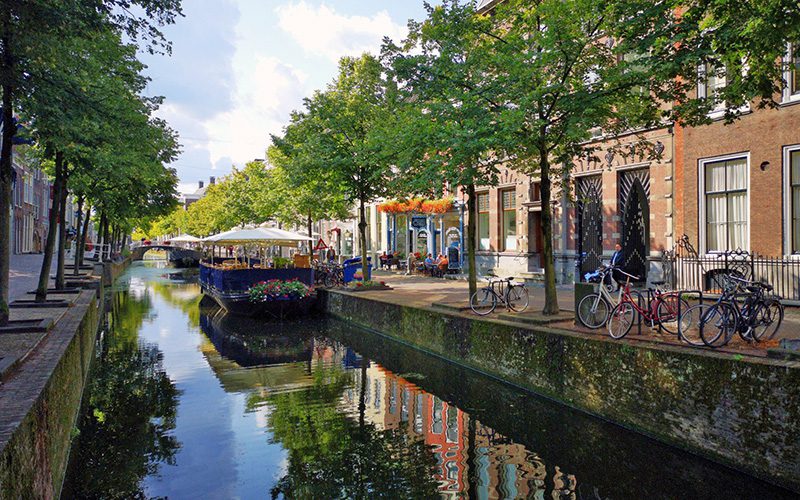
Delft is one of the most beautiful cities in the Netherlands. It is located between Rotterdam and The Hague. Delft, which has managed to preserve its texture since the 1200s, is a developed city in the field of science and art. Delft City Hall, one of the works of the Renaissance period, Nieuwe Kerk, one of the most important architectures of the city, the Old Canal in the old city area, and the Old Church, one of the examples of gothic architecture, are among the must-see structures.
Located about 1 hour from Amsterdam, the city is also the city of Girl with a Pearl Earring. The creator of the painting, Hohannes Vermeer, spent his entire life here, from birth to death, and therefore created all his important works here. The city, where all roads are surrounded by tulips, statues and historical beauties, is like a fairy tale city.
9. Maastricht

Maastricht is a fairly small settlement, one of the oldest cities in the Netherlands. It borders Belgium and Germany. The city, which has a very successful university in the fields of economy and medicine, stands out with its structures dating back to the Middle Ages. In town, Historic St. You can watch the magnificent view of the Maas River from the Servaas Bridge and take a boat tour on the Maas River.
In Maastricht, which hosts many old buildings and cathedrals, the churches of Sint Janskerk and Sint Servaas, Schinveld St. Eligius Church, Sittard St. Peter’s Church, Maastricht St. You can see the Pieter Castle, the Basilica of Our Lady of Maastricht, the Onze Lieve Vrouwe Basilica, the 13th-century Helpoort, the oldest gate in the Netherlands. Another must-see spot for visitors to Maastricht is Vrijthof Square.
10. Giethoorn
Giethoorn is a rural city mostly made up of canals and waterways lined by around 200 tree bridges. Giethoorn is immaculately beautiful, where you can see traditional Dutch farmhouses with tidy gardens, perfectly suited to Dutch fashion, along the canals.
You can reach Giethoorn, which you can reach by train or bus from Amsterdam, since it is forbidden to enter with motor vehicles, transportation is done by boats in the streams in the lush green area. Visitors who come to the city, where technology has not yet entered, leave here fascinated.
Dutch eating and drinking
Dutch cuisine is famous for its delicious cheeses, raw fish bread called ‘haring’, sausages, french fries with sauce known as ‘patat’, round meatballs called ‘bitterbalen’ and pumpkin soup called ‘pompoensoep’. In Amsterdam, which receives immigrants from all over the world, you can taste exquisite tastes from almost every cuisine.
Seafood has a special place in Dutch cuisine. Heilbot fish, kabeljauw (cod) and schelvis fish varieties are caught from the north coast of the Netherlands and served in many different recipes. Raw herring with onions and pickled cucumbers is the national dish of the Netherlands. Don’t forget to try mussels and oysters.
The Netherlands, which is the world’s largest cheese producer and produces hundreds of cheeses throughout the year, has 12 cheese varieties that are famous all over the world. Especially if you are in Amsterdam, you should definitely taste Gouda and Edam cheeses.
Heineken, the world famous Dutch beer, is third in the world ranking. The Netherlands exports more than 140 types of beer to more than 70 countries of the world. On average, every Dutchman consumes 74 liters of beer per year. You can try Heineken beers at many of the beer tasting houses (proeflokaal) in Amsterdam. On the other hand, you have to taste ‘jenever’, a traditional Dutch drink. Invented by a Dutch physicist in the 16th century, gin is made by adding juniper berries to brandy.
where is holland
The Netherlands is one of the four countries that make up the Kingdom of the Netherlands, bordering the North Sea to the north and west, Belgium to the south, and Germany to the east. Most of its territory is in Western Europe, and the kingdom has three islands in the Caribbean. The autonomous regions in the Caribbean Sea are called Bonaire, Saba and Sint Eustatius Netherlands Antilles.
The Netherlands, officially called the Kingdom of the Netherlands and located in the northwest of Europe, is known for its long plains, colorful tulip fields, and windmills that are synonymous with its name.
How to get to the Netherlands
The Netherlands enjoys a maritime climate with cool winters and mild summers. March is the driest month, daffodils rise in April and tulips bloom in May. July and August are the hottest and most humid months. Spring is a good time for both visual and air temperature.
You can reach Amsterdam Shipol Airport directly from Istanbul Atatürk and Sabiha Gökçen airports, with flights lasting 3.5 hours with Turkish Airlines and Pegasus Airlines 7 days a week and 2 days a week with KLM Airlines.
You can be in the center in 30 minutes by taking a taxi from Schiphol Airport, which is 15 km away from the city center, in 40 minutes by public bus, or in 20 minutes by taking the train from the airport.
You can reach Rotterdam by Turkish Airlines direct flights from Istanbul Atatürk Airport, lasting 3 hours and 40 minutes, 5 days a week. You can be at Rotterdam Central Station in 15 minutes by taxi from The Hague Airport, which is 10 km away from Rotterdam city center, or by taking the bus No. 33 departing from the airport in 30 minutes.
It is possible to reach almost all cities of the Netherlands from the capital Amsterdam by plane or train. On the other hand, you can use a bicycle for urban transportation or explore on foot throughout the country.
The Netherlands, the Land of Tulips, is a magnificent destination worth exploring all four seasons of the year with its unique natural beauties, fascinating canals, world-famous museums, architectural structures that have an important place in European history, and its legendary entertainment life.













